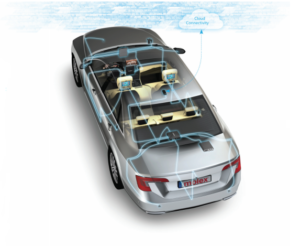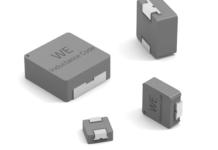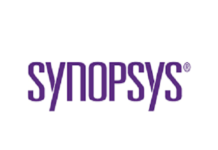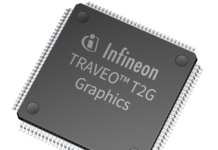
“Car manufacturers deliver electricity, electronics, and wireless data communications throughout the vehicle,” according to Mike Gardner, director, advanced technology market development, Molex. “It’s no longer just enough to drive from Point A to Point B; you must be entertained, informed, and protected along the way. In order to be connected to your vehicle, your vehicle has to be wellconnected. That goes beyond the vehicle itself, as more cars offer Wi-Fi and Bluetooth connectivity.” In an email interview, he elaborates on Molex’s approach to automotive applications.
What Segments of The Automotive Industry do Molex Solutions Serve?
Molex is focused on all segments of the automotive trends of infotainment, safety, powertrains, and autonomy. Opportunity lies in the idea that there are some synergies between them in that all are looking to share data across each domain. This trend of domain architecture and shared data is driving a need for networking within the vehicle architecture.
Connection reliability is crucial, and Molex works toward leading the way to ensure we meet the demands of both automobile designers and their customers. Molex works to integrate all these networks through a systematic approach to automobile communications. It’s a product offering and a strategy we’ve used in every industry we serve.
What is Unique about Molex Solutions, and how do They Help Customers Meet Quality and Reliability Requirements?
Today’s auto systems serve two fairly diverse functions: to improve internal and external communication systems within the vehicle, and to reduce the overall weight of the vehicle. A challenge our team has met is to make the connectors not just more robust, but also to make them lighter in weight. Those challenges get greater as the size of the vehicle increases.
But the systems also must deliver diagnostics to the driver and to the car maintenance team. Where Molex has stood out is in delivering both the connection and the system to turn the data into useful action and knowledge.
What are Some Common Applications Problems Your Customers Face, and how do You Help Solve Them?
Today’s connected automobile systems need to handle both power and signals without harmonic distortion on the line and with absolute reliability. With so much data passing through the vehicle as it heads down the road, it’s essential that the right information is delivered to the driver at the right time.
Here’s one example: The back-up camera in a vehicle is delivering a picture to the driver’s video console. At the same time, a wireless sensor is measuring the distance between the rear bumper of the driver’s car and every other car in proximate range. If the driver’s car gets too close, an audible sound alerts the driver; some steering wheels actually vibrate a little to provide an additional warning. All of these wired and wireless communications happen constantly, in sync with one another, and in the space of just a few microseconds.
How do You Address The Signalintegrity Issues That Might Arise When Transferring High-Speed Signals in An Automotive Environment?
It is a matter of ensuring flawless chip-to-chip connectivity. At Molex, we have complete confidence in the connectors themselves, but that’s just part of the validation process for automakers. We must be concerned with how the wireless signal is shielded, how the design of the system affects the signal reliability, and how the test process is conducted. The overwhelming potential of autonomous driving and of V2V communication require testing and retesting.
Molex does a lot of work with different OEMs on their automobile systems, and we know this is a continually evolving process. Technologies such as highly managed and reliable twisted-pair wire terminations for differential pairs now are more widely deployed. They offer higher data rates and lower electrical emissions for these complex systems. Cable manufacturing and termination methods must continue to be evaluated and tested to levels not seen in prior decades of automotive evolution. It’s an exciting time, but we can’t forget that the first responsibility is safety, followed immediately by reliability.
How do You Help Your Customers Comply with Safety and Related Regulations?
The test processes I just mentioned are one way; another is that our engineers constantly study and evaluate how technological changes can be applied to our products.
There is not a single global safety standard; as such, we also must ensure these technologies meet the standards where the automobiles are built and used. It’s a complex process, but Molex is fortunate to have the in-house engineering skill to be able to customize solutions to meet the standards in every region we serve around
the world.
What Trends and Challenges do You See Arising Over The Next Year With Respect to Automotive Connectivity?
Autonomous vehicles are coming, and a single global communication standard for such vehicles would help accelerate that process. Our experience with manufacturing and telecommunications leads us to believe that a global standard is unlikely. What also complicates matters is the number of different players in this discussion: auto manufacturers, search engine companies, software developers, and third-party applications providers.
At the same time, communications protocols are changing. Wireless broadband will see 5G technology in the near future, and automobiles will be part of the equation.
Simplifying a complex issue such as this isn’t easy, but here’s one thought: Keeping the lines of communication open has never been more important. Secure communications from vehicle to vehicle is essential to realizing the goal of autonomous vehicles. If we begin with the idea that the ways cars communicate must be safe, simple, and secure, perhaps that model will spread to how we deal with the other issues related to automobile connectivity.
BY: RICK NELSON | EVALUATION ENGINEERING
For more information about Molex visit: www.molex.com


















